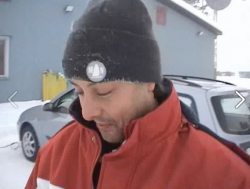raffaele.battaglia
About
- Username
- raffaele.battaglia
- Joined
- Visits
- 198
- Last Active
- Roles
- Administrator, Moderator
Comments
-
Hi Chris2020, sorry for my reply delay. Fist thank you. We are very happy that you are enjoying with openQCM. We have always aimed to obtain open-source instruments that have similar performance to commercial scientific devices. So, your comment is …
-
Are you sure you are connecting the quartz in the right mode?
-
you are welcome!
-
Hi joelvanbeem, absolutely yes. You can use the sensor without a lid. You will observe only a noise increasing due to the sensor exposition to the external environment. On the other hand, you can also use your own sensor head by wiring it to the mai…
-
Dear huijeanlim, regarding your question... your observation is correct. As a matter of fact, the materials exposed to the solutions are: - Gold electrodes and Quartz - Viton o-ring - PMMA or PTFE - Tygon Tubes It is difficult for me to answer yo…
-
You are welcome and thank you too. Please let me know if you will solve!
-
Hi huijeanlim, thank you for your interesting question. regarding your procedure, your impression is right. Sometimes QCM instruments have drifts due to o-ring swelling or other mechanical stress on the sensor. By knocking on the device fluidic cel…
-
Dear joelvanbeem, unfortunately with the Wi2 is not possible to retrieve the peak of the resonance curve, because its electronics is based on a Pierce oscillator. Anyway in the next few days we will launch openQCM Wi3 by means it will be possible to…
-
fantastic! Thank you for your kind feedback!
-
Hi huijeanlim, The reason we recommend aspiring is to avoid overpressure and, consequently, possible fluid leakage. This was especially valid for our old devices. Now that we have redesigned the sensor module, with a bayonet system, it is also possi…
-
Thank you very much!
-
Hi Ville, regarding your question, yes, it is possible monitoring simultaneously overtones. But actually we are working to a new software version in order to enable this possibility. Actually should be possible to scan all frequencies together in ab…
-
Hi TJones, drifts can be normal in the typical QCM behavior. These can be due to a number of external factors, such as the presence of humidity, temperature or a swelling effect of the o-ring. These drift effects are also described in the Q-Sense E-…
-
Hello jmhm, thank you for your interesting question. Unfortunately you will not be able to retrieve a frequency-mass relation for a such "big" droplet by measn QCM devices. First (but secondary as importance) the nominal saturation limit for a 10MHz…
-
Hi Nhannd, thank you very much for your evaluations. In this first version of openQCM shield we preferred to choice a basic approach. In this way we decided to make an electronic for general applications. But your evidences are absolutely correct. …
-
Yes, but consider that the teflon cell is strickly linked to the openQCM case design. The teflon cell is a cover piece with 2 fluidic interfaces for connecting pump tubes, embedded in the opeQCM cover. I believe that is not useful without the rest o…
-
Hi Claire, In the past I worked with UHV environments for aerospace applications and actually QCM technology is one of the best and reliable methods in order to monitor mass variations at molecular scale, under vacuum and also in cryogenic environm…
-
Dear Michael, I am very sorry for the reply delay. In this period we are working hard around openQCM dissipation module and as a consequence I lost this post! I know about people that used the shield in vacuum, but personally I do not received fee…
-
You are welcome!
-
openQCM quartz is not grounded. Honestly I do know if it is possible to apply a DC offset.... let me to try before better answer to your question.
-
Hi mswestph, this is Raffaele, from openQCm Team. I used cold fingers and QCMs in UHV during my Ph.D. thesis. I used this method in order to increase cleaning of the sensor and in order to avoid molecular degassing from the sensor. In my case I do …
-
Generally we used a flow rate of about 0.1 ml / min Which causes a frequency standard deviation of about 3 Hz to flow . The maximum flow rate Should be 1 mL / min Higher flow rate can cause larger frequency fluctuations around the baseline . But it …
-
Hi Nicole.g, Arduino micro clock is 16 MHz and FreqCount library works well up to 8 MHz as you can read here http://www.pjrc.com/teensy/td_libs_FreqCount.html > FreqCount: best for 1 kHz to 8 MHz Despite this Arduino clock limit, we can measu…
-
You are welcome and happy New Year too!!!
-
Dear Stuart, This is Raffaele from openQCM team, very nice to meet you. First of all thank you for being our welcome customer. Here my answers: 1. technical specifications of openQCM quartz crystal sensors in Sauerbrey's equation electrode a…
-
Hi Terry, the openQCM has an embedded thermistor for monitoring the temperature of the device. In this way you can check when the device reaches the temperature stability, i.e. the temperature reaches the plateau, before starting your measurement. B…

